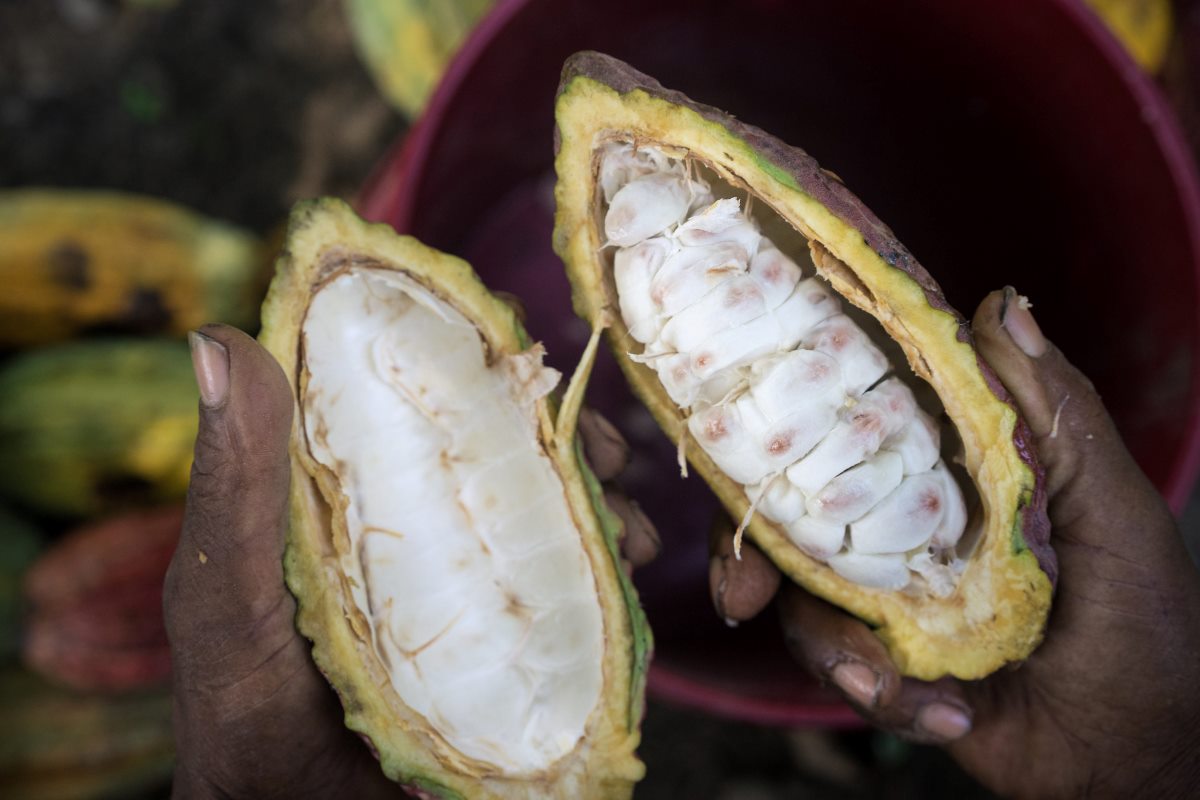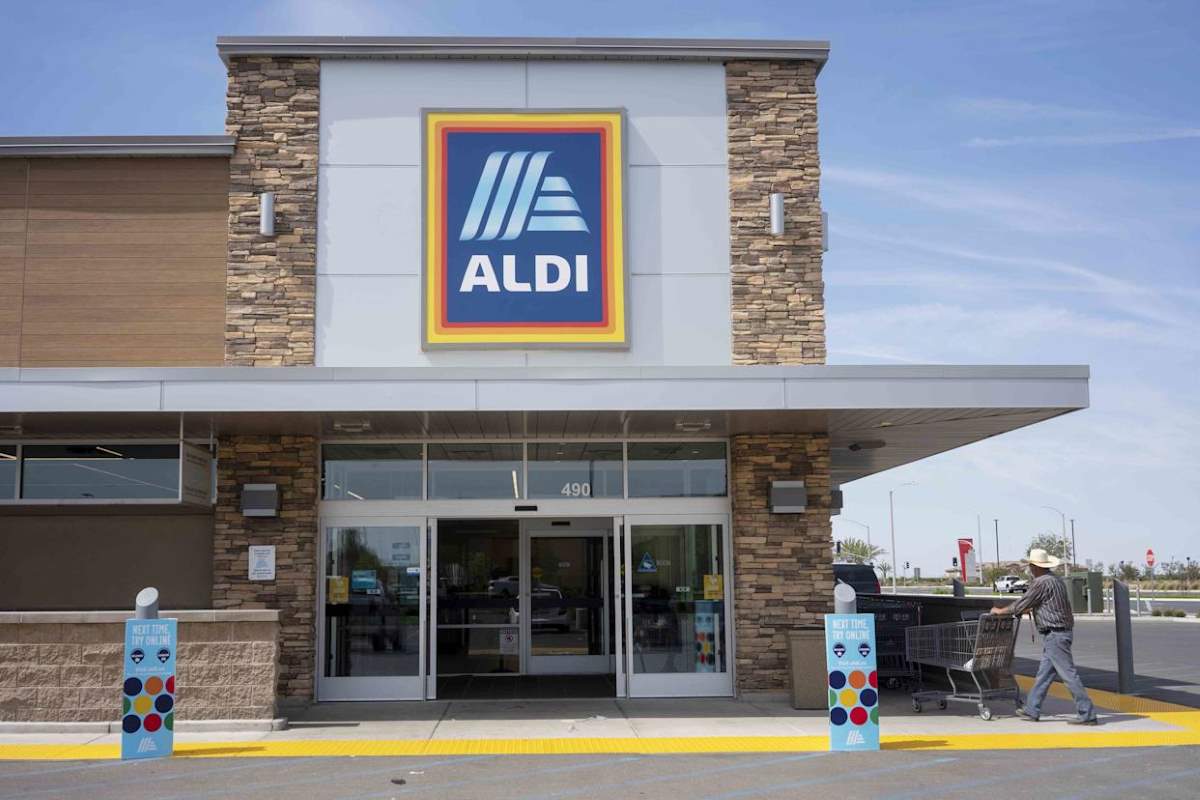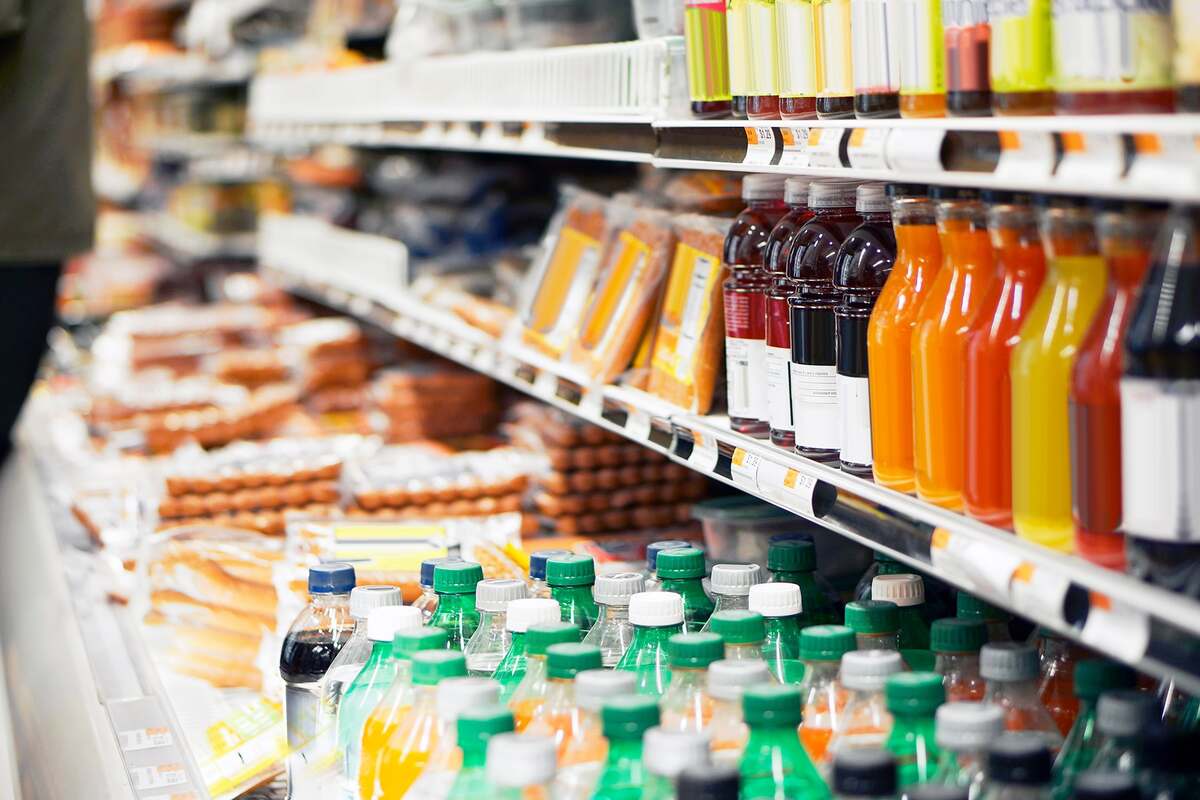There’s more to the chocolate supply chain than meets the eye. When you pick a cocoa product off a store shelf, what you see is a nicely branded delicacy. However, the story behind the farm-to-table journey of chocolate has, over the years, been marred by poverty, exploitation, and environmental damage.
West Africa has been the leading producer of cocoa beans since the 1920s. To date, cocoa exports from Cameroon, Nigeria, Ghana and the Ivory Coast account for approximately 70 percent of global consumption. Unfortunately, that figure is beginning to plummet. A 2025 report by the UNDP spotlighted some of the issues plaguing cocoa cultivation in West Africa.
This piece will help you understand some of the unprecedented costs of the chocolate bars and other cocoa products you enjoy so much.
Global Cocoa Production Overview
The next time you munch on some delicious dark chocolate, try to imagine the complex logistics that made it available in your local store. The raw cocoa that birthed that product was probably aggregated from different parts of the world, depending on where the cash crop was available at the point of demand.
While the Ivory Coast and other West African countries lead the pack of the largest producers of cocoa, the commodity is multi-continental. The cocoa plant thrives in a hot and humid climate, which is found in the equatorial belt of the planet. Consequently, the cacao tree also produces commercial yields in Asian countries like Indonesia, Brazil and Ecuador in Latin America.
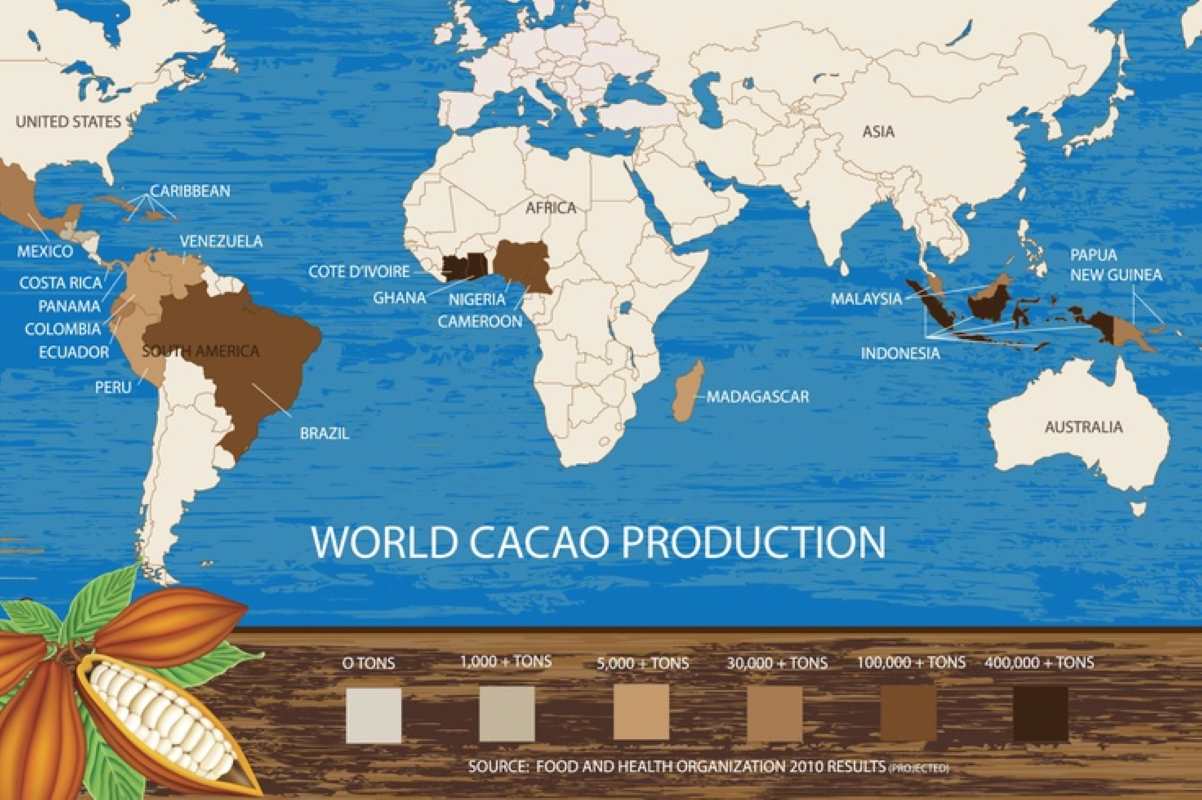
A 2020 World Economic Forum (WEF) report pegged the value of the global chocolate industry at $130 billion. According to a more recent study by MarkNtel Advisors, the global chocolate industry is expected to balloon to about $172.89 billion by 2030. However, these figures may be of little consequence for the average cocoa farmer. According to the WEF report, the average cocoa farmer gets a paltry 6.6% share of the global cocoa trade. On the contrary, retailers make away with as much as 44% of earnings from the cocoa trade.
ALSO READ: The Untold History of Chocolate: From Sacred Cacao Drink to Global Candy Icon
Child Labor and Worker Exploitation
While cocoa remains a valuable crop, its production is marred by many bottlenecks. For one, the crop itself has a high turnaround time, with a cocoa pod taking about 160 days to ripen. It is also suggested that it may take the annual harvest of two cocoa trees to produce a bar of chocolate. Due to the vast effort required to annually obtain a few cocoa pods from each tree, farmers have resorted to practices that are blots on cocoa farming ethics.
For example, West African farmers have been reported as exploiting child labor, to cut production costs. According to a 2019 investigation by the Washington Post, some 2.1 million school-age children are working on cocoa farms in Ghana and the Ivory Coast. Most of these children are not locals, but are often trafficked from places like Mali and Burkina Faso.
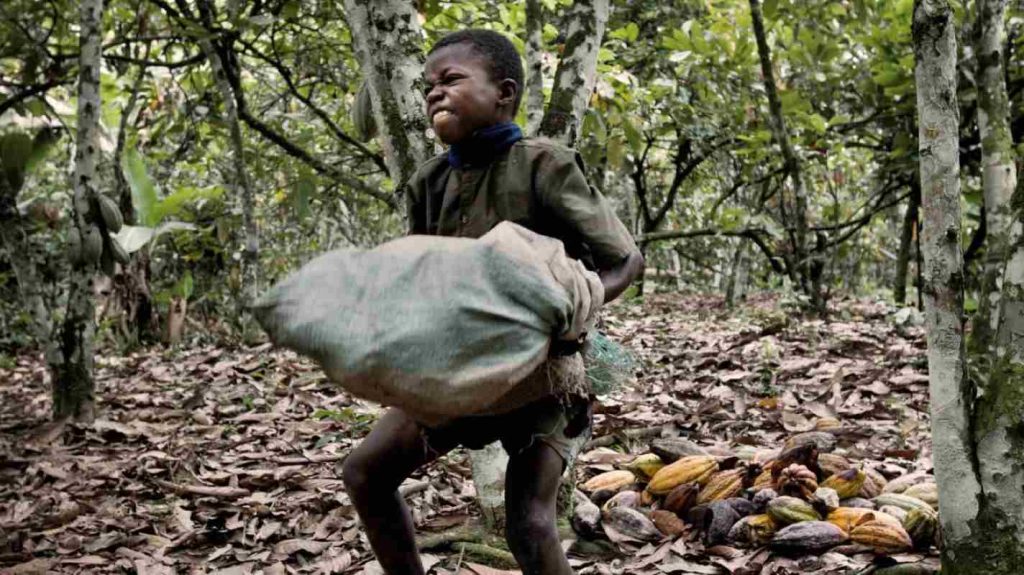
The imbalance in the value system of the chocolate supply chain is partly responsible for child labor. On most West African cocoa farms, reports have it that even adult workers earn less than $1 daily. So, it is little surprise that child labor in chocolate value chain does not really faze stakeholders directly involved.
Besides the low cocoa prices leading to chocolate industry exploitation, local economic woes in the producing countries also often translate to the neo-slavery of workers. For example, a lack of education makes local populations largely oblivious to child labor. Poverty often drives the workers to brave demeaning conditions just to put food on the table.
Environmental Impact of the Chocolate Supply Chain
In recent years, the global chocolate supply chain has been experiencing a decline. This trend is partly due to widespread cases of deforestation in the producing countries. For example, West Africa has been on the receiving end of the environmental degradation crisis due to the activities of cocoa farmers. In some cases, the decline in cocoa production volume is due to existing trees having exceeded their peak production years. So, farmers try to make up for such deficits by clearing virgin vegetation and planting new cocoa trees.
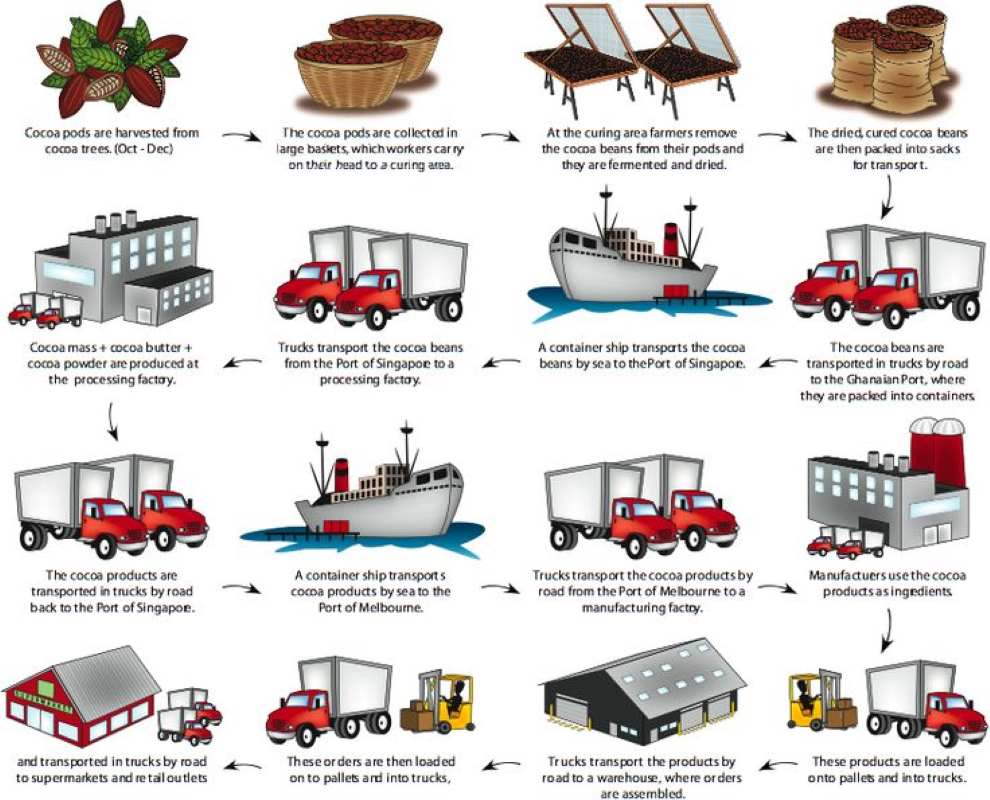
Some cocoa trees are several decades old, and their continuous cultivation causes depletion of soil vitality. Some farmers encroach on national parks and natural preserves to cultivate new cocoa vegetation. Such illegal activities topple the balance of biodiversity and, in some cases, push some species to the brink of extinction.
In fairness to local authorities and international buyers, there are ongoing efforts to reduce the environmental impact of cocoa cultivation. However, tracking cocoa seeds along the chocolate supply chain may help build a sense of responsibility among farmers.
Efforts Toward Ethical and Sustainable Cocoa
Along the chocolate supply chain, there are multiple initiatives, public and private, for sustainable cocoa production and global fair trade. Top chocolate brands usually obtain Fairtrade and Rainforest Alliance certifications, when their cocoa beans are not just top quality but sourced humanely. Such ethical chocolate brands tend to enjoy better patronage, particularly in the international market.
Though Fairtrade cocoa and Rainforest Alliance are non-governmental initiatives, they both enjoy considerable governmental support.
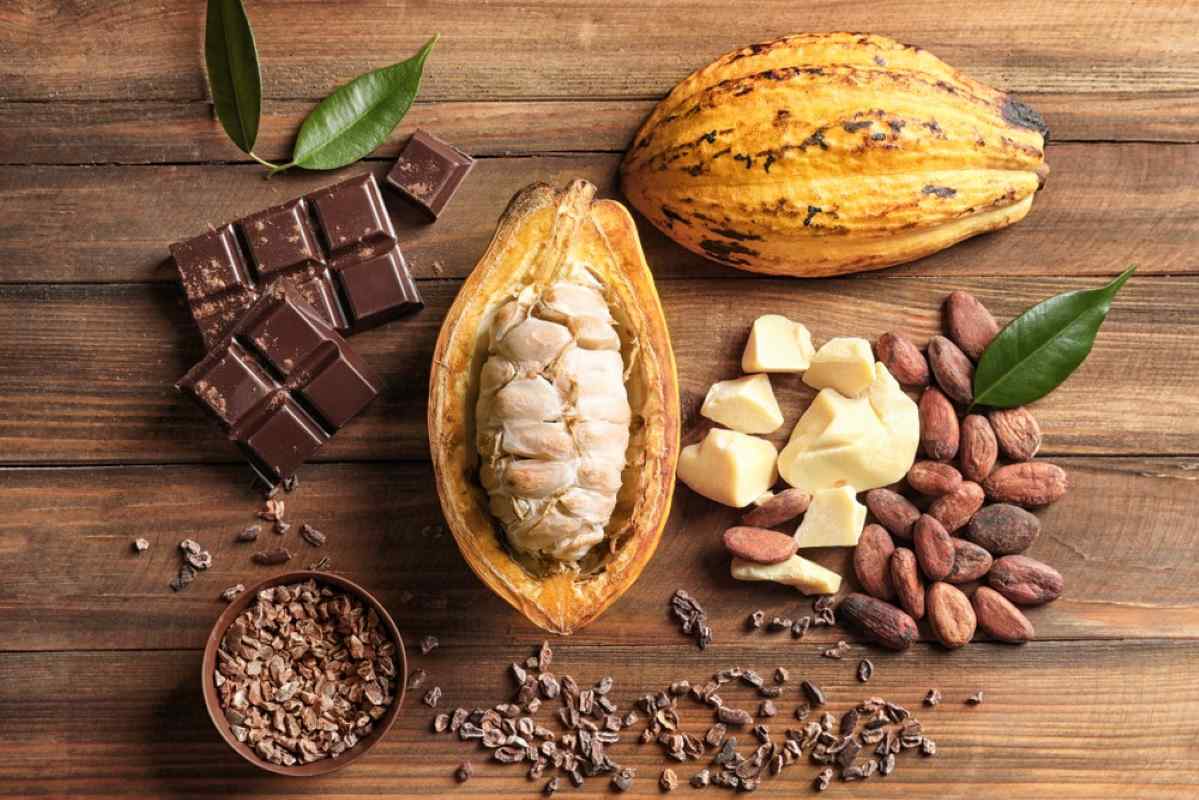
In addition, some ethical chocolate brands make public commitments to sensitize consumers about the cultivation of cocoa. Such companies not only sensitize customers about their in-house chocolate sustainability practices. Instead, they also educate people about partronizing businesses that use unethically grown or sourced cocoa in their products. Sustainable cocoa production transcends the labor type used on the farms, to the remuneration of workers, to regenerative farming practices, and pro-climate initiatives.
For example, the Ferrero Group have made the cocoa used in their products traceable. In addition, the brand’s recent sustainability report affirms that “Efforts are being made to make cocoa farming profitable and sustainable, with initiatives aimed at climate resilience, women empowerment, education and community development.” This is just one of many examples, as other companies like Mars and Nestlé are starting initiatives that aid the local stakeholders in cocoa-producing countries.
ALSO READ: From Farm to Fork: How AI Is Revolutionizing the Food Supply Chain
What Consumers Can Do to Make the Chocolate Supply Chain More Sustainable
It is undeniable that NGOs, government agencies, and companies have significant roles to play in fixing cocoa farming issues and eliminating chocolate industry exploitation. However, consumers of cocoa products can equally contribute some efforts towards making cocoa production sustainable.
For example, next time you find yourself having chocolate cravings, check that the item you’re about to order has an ethical certification. A WFTO, Rainforest Alliance, or Fairtrade logo should have enough clearance.

Always looking out for signs of brand credibility is one of the ways consumers can support sustainable practices. So, check for digital traceability tools like QR codes that make the bean-to-bar journey of chocolates accessible. Also, read stories of brand culture from the company’s publicly available publications.
From the foregoing, you must have noticed that there is more to the chocolate supply chain than meets the eye. Every little detail, from land acquisition, workers’ welfare and even the conveyance of cocoa beans, is pivotal to sustainable chocolate production.
Every bite of chocolate can be part of the problem, or part of the solution.







